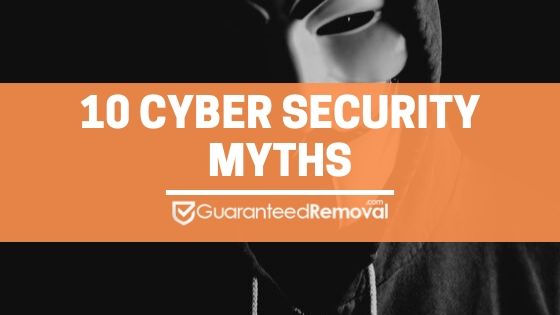The Dark Side of Online Reputation Management
Online reputation management (ORM) is a great tool to manage your online image, but there are negative attributes about ORM that users need to be aware of. Surprisingly enough, some service providers utilize borderline illegal business methods commonly used by the dark side of online reputation management. One of these methods includes being a “mugshot extortionist”.
Mugshot Extortionist
Businesses can be affected by mugshots of executives or high-ranking individuals. This is a common reason that business owners contact online reputation management firms and ask for help in the removal of a past mugshot. For proper online reputation management firms (like EraseMugshots), they would utilize SEO and attempt to push down the results of the mugshot.
For illegitimate firms, they ask for a small fee and can “take the photo down”. After the fee is paid and the picture is taken down, it is then re-uploaded on another site, asking for another fee as well, which is then repeated. Henceforth, this process is financially draining and completely non-beneficial. We guarantee all of our work 100%. Meaning if this occurs and we cannot remove it, you receive a full refund.
Tips for Managing Your Online Reputation
Avoiding “mugshot extortionist” and other illegitimate online reputation scams can be done by using tips to manage your own online reputation. Whether you are a business that is trying to grow or dealing with a dark online past, the following tips can be helpful:
Not Responding to Negative Reviews
Responding to negative reviews actually can be more harmful than helpful. Stop researching your negative reviews, the more you do the higher Google will show them. Building trust is important is business and especially with your customers.
Utilize Other Ways to Respond to Consumers
Handling negative reviews can be as simple as replying to them. Make sure you are replying in a polite manner on a site you control. This could be through social media platforms such as Facebook, Twitter, or any other various company sites. Gaining customer feedback is essential to your growth. The more feedback, the better site ranking.

Properly Dealing with Mugshot Sites
Upload photos on social media platforms like Facebook or Instagram. This can permit the photos that you upload to become some of the top results for pictures of you on Google.
Use Credible Sources
Furthermore, your presence online is growing every day. Finding the most credible sources to help with these issues is the best way to ensure a positive online image.
Along with contacting credible sources, not all online reputation management firms use extortion scams such as “mugshot extortion”. There are plenty of online reputation management firms and strategies that you can use that are extremely beneficial. In conclusion, make sure you know who is the real deal.
10 Cyber Security Myths Everyone Should Know
Learn about the top ten cyber security myths and what you can do to protect yourself online today.
Back in the 1990s, the internet was frequently described as “a domain for those nerds”. But sadly, that reference has been reiterated by a US White House official describing how cybersecurity is perceived now. There are over 3 million cyber-attacks that occur online on any given day.
We’re setting a precedent for a stressful occasion by decreasing safety to all those”nerds”. Everyone who operates online or frequently “Googles” to get answers to all their questions. It is important to understand the internet and how cybersecurity threats come into play.
With many cybersecurity myths hovering above, the haze about a sensible evaluation of the present situation is not likely to be eliminated quickly. Because of this, it’s quintessential for all of us to debunk such truths until we talk about the true dangers of working on the internet in 2019.
Myth #1: It’s Just a “Threat”
The cyber security myth Classifying business risk as only”cyber threat” will just undermine the gravity of this threat. In a much-viewed part in Forbes magazine, a reporter educates readers about how cyber threat encompasses intellectual property and the security of employees. More importantly how it requires equal attention from senior executives and management staff.
Saying, “Oh, this would never happen to me”, which we will get into shortly is simply an ignorant statement. The internet is home to billions of users, one would only be being naive if they thought nobody would ever come after them. This happens to everyone.
People today treat cyber protection and preventive measures like a fire drill back in grade school. Everyone knows the motions and what they should be doing, however, they never anticipate employing what they learned. Unlike a fire, your reputation is something that must be managed proactively. Your reputation symbolizes somewhat of a safety net per se, it is there to catch you and protect your public image if something unfortunate (such as a negative life event i.e. an arrest) were to occur.
Myth #2: Will Never Happen To Me
It can be natural to lean toward thinking cybersecurity is a challenge unlike what you have ever faced before. But history will say nothing is genuinely new. Back in the Victorian age, when communications and trade underwent a shift with innovations in engineering, the danger perceived was not any different.
The notion that you are somehow protected by an invisible shield where your personal information will never be at risk is a statement far from the truth. However, most individuals don’t believe they are ignoring any problems. When it comes to topics such as your online reputation you cannot wait until something happens before you decide to take action.

As we opened up this article we mentioned a statistic. There are over 3 million cyber attackers EVERY DAY. That amounts to over 1 billion internet security breaches each and every year. To put this more into perspective, the world population is 7.53 billion, 35% of which own smartphones with an internet connection. This breaks down to roughly 2.6 billion individuals that have the ability to expose or potentially leak your personal information across the globe in a matter of seconds.
Let that sink in before we move on…
Myth #3: An IT Problem
Knocking down cybersecurity into an”IT problem”. Cyber risks once designated as “IT hazards” will just promote issues throughout the whole business.
It is vital to understand, cyber dangers cut across sections and that is what’s menacing. Information once digitized, there is no earmarking cyber hazard to some department.
Once a third party gains access to your system(s) it can spread like wildfire.
Myth #4: Cyberattacks Are Not Common
Cyber attacks are typical –many organizations are assaulted every day. Counting the number of cyberattacks is a useless exercise since it’s as excellent as counting bacteria or grains or rice. Although the government does their fair share or reporting these acts, just like any crime we can never fully grasp to the entry of what’s going on.
Wise action is to assess the risks and reevaluate the best way to manage them. Since this can happen to anyone there should be options for everyone. Not just those individuals with deep pockets and media connections. That is where Guaranteed Removal steps in, for the past decade we have assisted thousands of satisfied clients at removing negative content online, promoting themselves in a positive light as well as constant reputation monitoring to ensure they are out of harm’s way for many years to come.
If you are interested to learn more about how our specialists can help you take back control of your online reputation please complete the form below. We will conduct a comprehensive analysis where our team will scour the internet in search of any negative or unwanted information online. What do you have to lose? It’s free!
Myth #5: Basic Software Will Suffice
Focusing on applications isn’t secure enough. Although good applications are essential to shield cyberattacks. It’s not sufficient to see the software in isolation. Other people are the numero uno hazard. It’s vital that you invest in training your own tools and enhance the efficacy of cyber applications, thus, striking a nice balance between security and usability.
When most individuals purchase a laptop or computer from a place such as Best Buy they tend to decline the added security measures. Most simply look at this as “oh great, another cost. Do I actually need this?”. And the answer is yes, 100% yes. You are spending your hard-earned money, from a few hundred in upwards of thousands of dollars to a piece of technology you are going to be spending a great deal of time on.
Myth #6: Cyber Criminal Don’t Target SMEs
Hackers can quickly get your data, which might be valuable. A report printed in 2015 from HM Government affirms the susceptibility with 74 percent of SMEs reporting a security violation.
Anyone that owns a business is vulnerable to cyber-attacks and data leaks. Whether it is your client list, inventory reports or marketing plans. If a hacker breaks into your database, your future plans for your business could be ruined overnight.
Nobody is excluded from cybercrimes. The key is to limit your exposure and chances that it will happen to you. Being a business, this places you at a greater risk. Individuals that go after SMEs and wealthy individuals are in it for the money. Most of the time it doesn’t matter how much they take. Hackers do this both for a living (to make an income) as well as for fun just to see “if they can do it”.
Myth #7: Manufacturers Provide Safe Systems
Producers are liable for a safe system. True. Device makers need to be more accountable for producing secure products that are robust. However, it’s often people that are unpredictable and undependable. People today find ways to bypass security by utilizing devices which aren’t so secured–tablets and smartphones.
Myth #8: Nobody Wants My Information
Maintaining and sharing info online is obviously likely to be an issue, lest we cope with it earlier. End-to-end encryption via a VPN is a secure means of sharing data over the net.
Watch this short video about what you can do today to take extra care that your reputation and online presence is in good standings.
Myth #9: The Internet Restricts Certain Actions
You’ll have remote access to your house devices. But by design, it makes your house more vulnerable than ever. It’s estimated that producers will soon recognize apparatus are possible avenues to our sensitive data and behave accordingly.
As we begin to see more and more “smart devices” it has become a larger concern about their security measures. For example, Amazon offers a doorbell to the market that has a camera or maybe a pin pad to enter a 4-digit code to enter the home. Seeing as this is a smart device and is capable of connecting to Bluetooth your home residence could be at risk.
Companies such as Target even fall victim to data leaks and financial records or customers being leaked across the dark web. No company is either too big or too small to avoid this problem. It is an epidemic and will continue to be one for the foreseeable future, unfortunately.
Myth #10: Hackers Are The Greatest Threat
Sometimes the great threat to our own reputation aren’t common cyber security myths, but ourselves.
Growing up in this digital era the times certainly changed. Children are online, browsing uncountable amounts of websites on a daily basis. As you watch them from across the room or in the rear-view mirror of your car you are unaware of what they are looking, who they are talking to, or what kind of personal information are they relaying to sites they’re visiting.
Although hackers are a great ideal in the world today, it is important that you do everything you can to ensure your reputation is protected. Keep your personal information out of harm’s way today and get started below. Again, what do you have to lose? We have your back.

